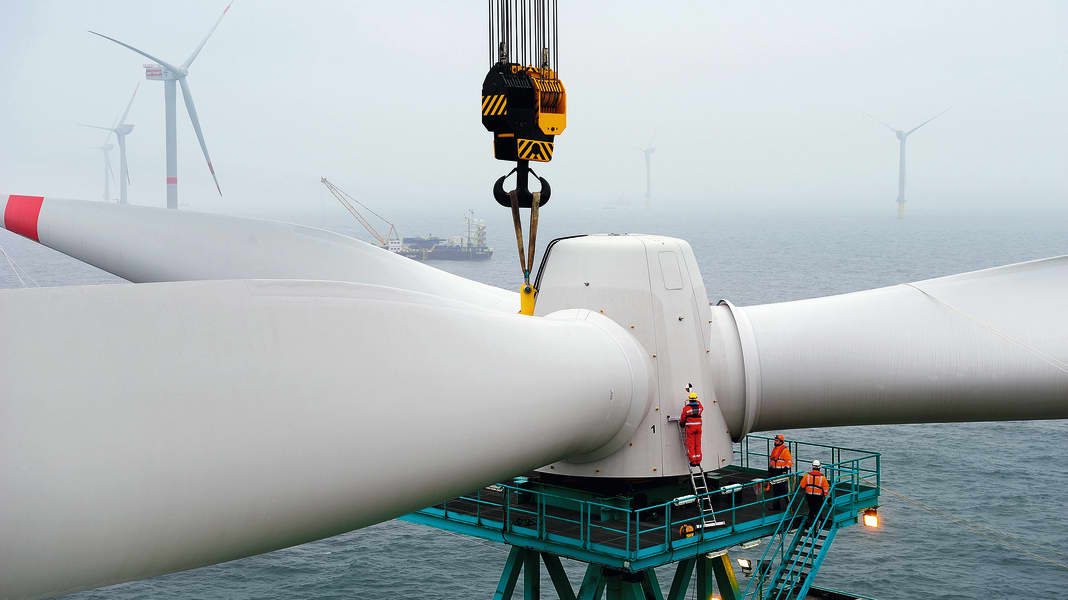
The nine countries bordering the North Sea have set themselves total expansion targets for offshore wind energy of around 120 gigawatts by 2030 and 300 gigawatts by 2050. At the same time, cooperation on the future production of green hydrogen from offshore wind energy and the expansion of hydrogen infrastructure in the region is to be strengthened.
Wind energy yield to be increased tenfold
Denmark, the Netherlands and Germany have also reached a concrete agreement to jointly promote offshore wind farms with a capacity of 10 gigawatts. This is likely to have a direct impact on sailors in the North Sea in the coming years.
In a statement, Federal Minister for Economic Affairs and Climate Protection Robert Habeck emphasised that cooperation in the North Sea has been at the top of the political agenda since the summit in Esbjerg last year. The agreements now reached in Ostend are "important and central approaches to jointly utilising the great potential of green energy", said Habeck.
The summit in the Belgian coastal city will be attended by the heads of state and government and the energy ministers of Germany, Denmark, the Netherlands, Belgium, Norway, Ireland, the UK, France and Luxembourg. They want to drive forward the expansion of offshore wind energy, so much so that the North Sea will become Europe's largest energy supplier by 2050.
There is no doubt that there is no way around renewable energy. And that includes wind turbines, which generate electricity with a high degree of reliability, particularly off the coast. Even before the war in Ukraine, it was clear that the expansion of offshore wind farms needed to be driven forward.
Wind energy expansion is important and right- and unstoppable
Critics continue to criticise the lack of infrastructure on land to transport the electricity generated at sea to where it is needed. Animal and environmental conservationists are concerned about the welfare of fish and birds. And the tourism industry fears for the attractiveness of some coastal resorts if huge windmills suddenly spoil the view out to sea. But don't kid yourself, the expansion of wind energy is important and unstoppable.
Not least us sailors will have to come to terms with this. A good ten years ago, the former president of the Association of Sea and Harbour Pilots, Gerald Immens, pointed out in YACHT that things were getting "pretty tight at sea". At the time, some people dismissed this as scaremongering. And in fact, the vast majority of crews whose home territory is the North Sea or Baltic Sea only perceive the existing wind farms as a seriously disruptive obstacle in isolated cases: for example, on the way past the Danish islands to southern Sweden. Or coming from Rügen or the coast over to Bornholm. But these are exceptions. On the one hand, because most of the bicycles are travelling far out at sea and are therefore far from coastal waters. Above all, however, because their numbers to date are still quite manageable.
The restrictions are still minor. But that is changing
As a result, the areas covered by wind turbines on the relevant nautical charts still appear correspondingly modest at present. However, if we now include all those areas that are also to be equipped with wind farms and the associated infrastructure such as transformer and storage stations in the next few years, it becomes clear that free sailing will soon be a thing of the past in many areas of the North Sea and Baltic Sea that are popular with local sailors.
Which areas, not only in the North Sea but also in the Baltic Sea, will be most affected by the expansion of wind energy in the coming years, have been compiled in detail in several maps. They show which wind farms are already in operation, where construction is underway and which areas may also be fitted with wind turbines in the future. And which sailing rules apply there.

